Oct 31, 2025
5 min read
The AI music industry in 2025 is booming, evolving from creative experimentation into a major global market.
This report analyses the latest AI music industry statistics, covering market size, regional trends, top AI tools, and genre adoption patterns.
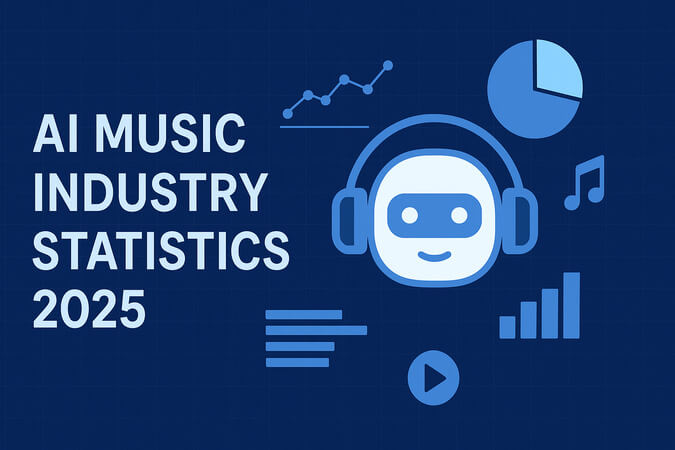
Part 1. AI Music Market Growth: How Big Is the Industry?
The global AI in music industry has moved beyond experimentation into a recognised business sector that spans creation, distribution, and discovery.
According to Market.us (2025), the AI in Music market was USD 5.2 billion in 2024 and is projected to reach USD 60.4 billion by 2034 (CAGR ~27.8%, 10-year window).
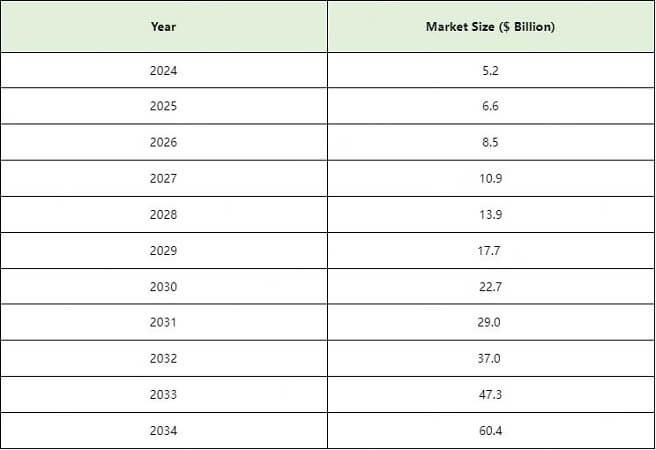
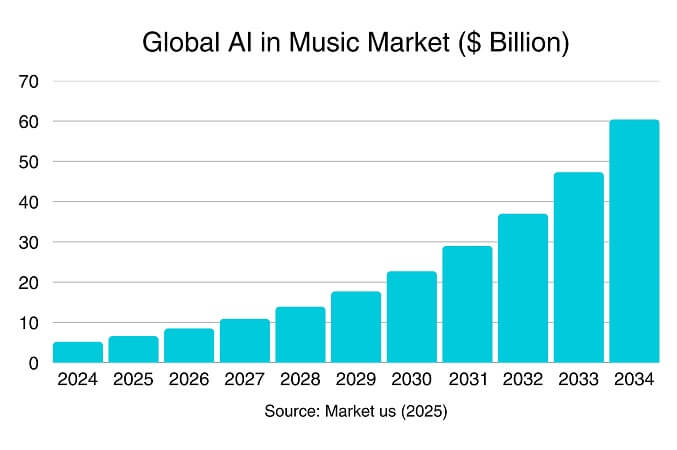
Within this larger ecosystem, the generative AI segment(AI tools that directly create music, melodies, or lyrics) is a rapidly growing submarket: Grand View Research(2025) estimates it at USD 738.9 million in 2025, projected to USD 2.79 billion by 2030(30.5% CAGR).
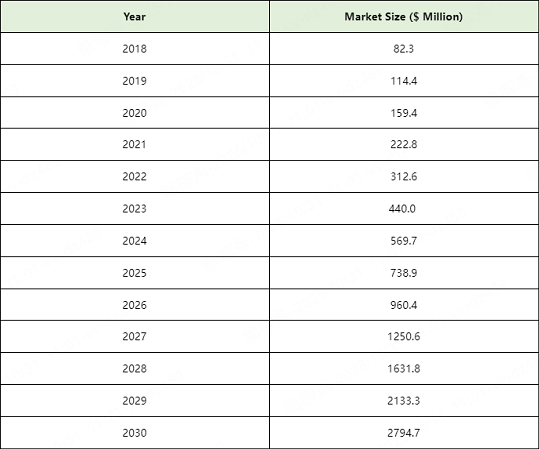
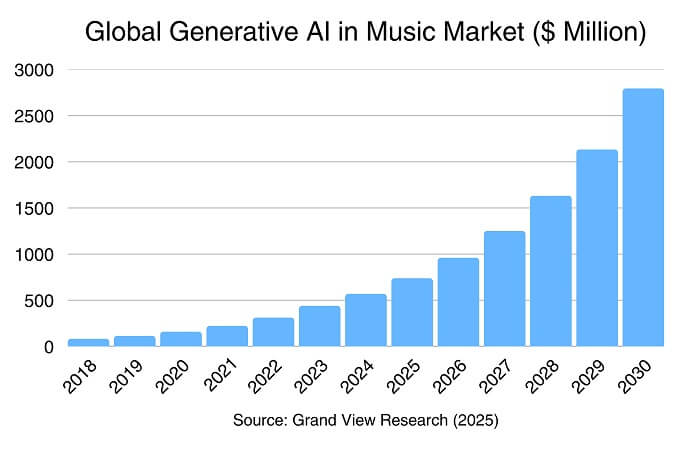
Rather than replacing human creativity, AI tools are increasingly used to assist with lyric writing, vocal synthesis, mastering, and sound design - helping both independent creators and professional studios to streamline their process and explore new ideas.
In this sense, AI music generation is becoming an important complementary layer in modern music production, bridging technology and artistry.
Sector financing is rising alongside adoption: According to Water & Music(2025), music-tech startups raised more than USD 700 million in the first half of 2025.
Flagship AI-music companies include Suno (USD 125 M Series B, 2024), Udio (USD 60 M Series A, 2024) and Musical AI (USD 1.5 M Seed, 2025) - all focusing on generative music, audio modelling, and rights management.
These figures show that AI music has evolved from novelty projects into a fast-growing commercial ecosystem supported by capital, regulation, and user demand.
Part 2. AI Music Generators: Tools Driving Growth
The expansion of the AI music market is closely linked to the success of new AI music generators, which have made composition faster and more accessible than ever.
Recent Semrush(2025) data highlight how quickly the field is scaling. In the Growth Quadrant chart, Suno leads in both total traffic and growth rate, positioning itself as the clear front-runner.
Other platforms - including Udio, Producer AI and Musicful - are expanding within niche and emerging markets.
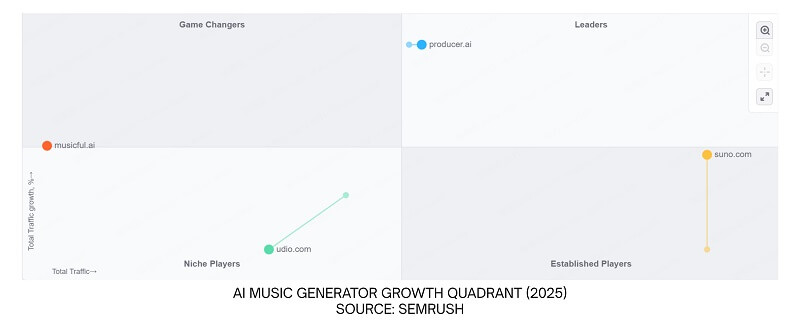
At the centre of this surge is Suno, widely recognised as the fastest-growing platform.
According to Semrush, Suno.ai attracts 46.9 million monthly visits, a stunning leap from zero at its March 2024 launch. Within just 18 months, it has become one of the most-visited creative-AI platforms globally, reflecting high user retention and continuous product improvement.
As of October 2025, the hashtag #SunoAI has surpassed 560K posts on TikTok.

While Suno leads the field, the broader AI music boom has allowed other players to rise. Among them, Musicful stands out for rapid growth and user engagement.
Its V2.0 engine increased generation speed by 40% and expanded support to 50+ genres, enabling creators to produce full-length, studio-quality songs without technical expertise.
According to Semrush (August 2025), Musicful's monthly traffic has grown nearly 20× since its late-2024 launch, reaching 1 million visits per month.

Beyond traffic, user behaviour data (Q1–Q3 2025) show that 87.9% of creators prefer Lyrics Mode, while Prompt Mode and Audio Mode account for 7% and 5% respectively - revealing that most users treat AI as a collaborative songwriting partner rather than a replacement for human creativity.
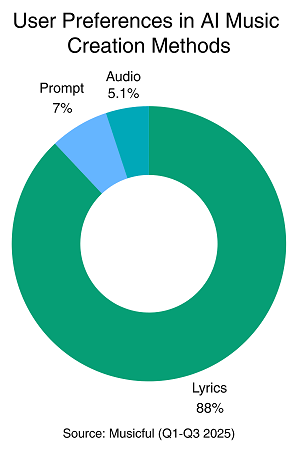
This combination of rapid adoption and diversified use cases explains why AI music generators remain the primary engine behind the industry's 30 % annual growth.
Part 3. AI in Music Business and Education
AI is moving from experimental use to practical integration across the music business.
According to the IFPI Global Music Report(2025), record companies are embracing AI to enhance artist creativity and improve fan experiences, while warning that unauthorised training on copyrighted works poses "a very real and present threat to human artistry."
The report urges policymakers to ensure AI supports rather than replaces human creativity.
Regulation is also catching up.
The U.S. Copyright Office(2024) reaffirmed that fully AI-generated works without human input cannot be copyrighted(copyright.gov). Meanwhile, the EU AI Act requires transparent labelling of AI-generated or manipulated content(europarl.europa.eu).
In response, platforms such as Musicful and Suno now allow users to release and monetise AI-generated songs under royalty-free licences, while retaining ownership of the underlying models.
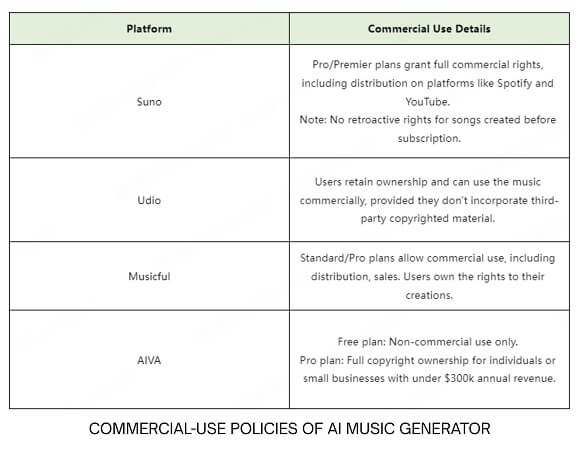
AI's impact also extends to music education.
Tools like Flat.io and AnthemScore help students with composition, transcription, and theory practice.
Institutions including Berklee College of Music and the University of Leeds have launched AI Music Labs, teaching students to blend creativity and algorithmic thinking - fostering a generation that sees technology as collaboration, not competition.
Part 4. AI Music Trends and Genres to Watch in 2025
By 2025, AI-generated music spans nearly every genre.
According to CISAC, it could account for 20 % of global streaming revenue by 2028, while Deezer reported receiving 20,000 fully AI-generated tracks daily, representing 18 % of all uploads. These figures confirm that AI music has become a measurable, revenue-producing segment of the mainstream market.
When it comes to genre adoption, creators are increasingly using AI to explore diverse styles. Electronic and urban music lead this transition: a Goldmedia & GEMA/SACEM study found that 55% of electronic-music producers and 53 % of urban/rap artists now integrate AI into their workflows.
This broader industry pattern is reflected in Musicful's platform data(Q1–Q3 2025), which analysed 2.7 million AI-generated songs to identify genre preferences among creators.
The results show that Pop(22.46 %) and Hip-Hop / Rap(22.12 %) remain the most dominant genres, together accounting for nearly 45 % of all AI-generated tracks.
Other strong categories include Rock(8.6 %), R&B / Soul(5.35 %), and EDM(5.13 %) — indicating that AI tools are now widely used in both vocal-driven and electronic styles.
Smaller but steadily expanding segments include Latin / Reggaeton(1.46 %), Country(1.68 %), K-Pop(1.24 %), Jazz(1.75 %), Metal(1.95 %), and Phonk(1.02 %), reflecting the growing diversity of creators experimenting with AI-assisted production.
Genres such as Indie(0.73 %), Folk(1.50 %), and Lo-Fi(0.36 %) remain niche but are increasingly adopted for personalised or experimental projects.
Meanwhile, the "Other" category - which accounts for nearly 25 % of total creations — underscores how AI music generation often blends multiple influences, producing hybrid genres that do not fit neatly into traditional labels.
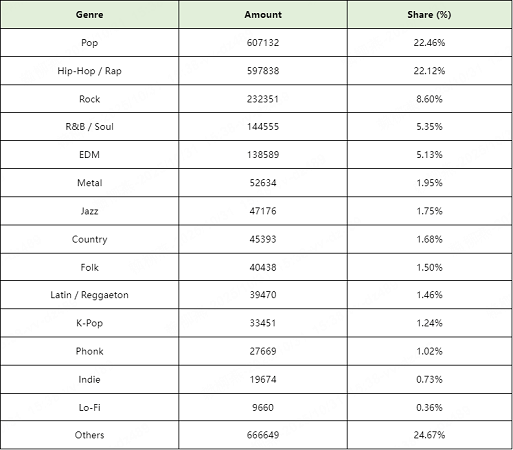
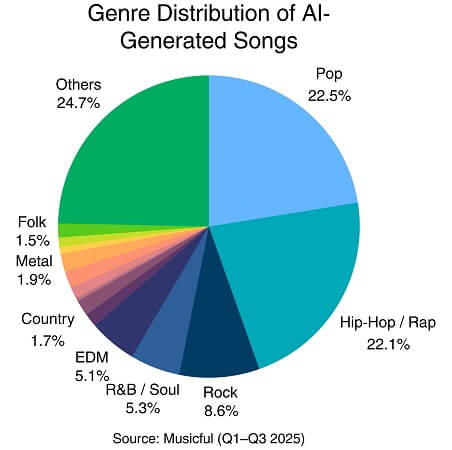
Together, these findings reveal that AI is not confined to a single sound or culture; it is expanding creative possibilities across the global music landscape.
Part 5. More Surprising Facts and Statistics of AI Music
1. How big is the AI music market in 2025?
According to Grand View Research(2025), the global AI music market is valued at USD 0.57 billion in 2024 and projected to reach USD 2.79 billion by 2030 at a 30.5 % CAGR.
2. What percentage of music is AI-generated today?
Deezer reports that 18 % of all daily uploads in 2025 are fully AI-generated, showing rapid integration into mainstream platforms.
3. Which genres dominate AI music creation?
Musicful data (Q1–Q3 2025) show Pop (22%) and Hip-Hop/Rap (21%) leading AI music creation, followed by Rock (9%) and R&B / Soul (5%).
4. Can AI-generated music be used commercially?
Most AI music platforms—including Musicful and Suno—offer royalty-free commercial licences, allowing users to monetise songs they generate.
5. Which regions are leading the AI music market?
North America holds about 38% of total revenue, followed by Europe (25%) and the Asia-Pacific region, which shows the fastest growth at 32.7% CAGR.
6. What is the future of AI music?
Industry forecasts suggest AI-generated music could represent 20% of global streaming revenues by 2028, reshaping how artists, platforms, and fans interact.
Conclusion
The latest AI music statistics point to an industry that is growing faster and maturing more quickly than ever. From creative tools to global streaming platforms, AI is no longer a side experiment but a key part of how music is made, shared, and monetised.
These trends make it clear that AI music is shaping the future of sound - redefining the modern music industry.


